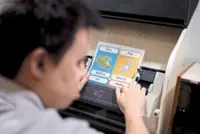Head lice actually don’t jump; instead, they move from hair to hair with the powerful claws at the ends of their legs. — AFP
Head lice can be easily transmitted in communal settings like school and daycare centres.
These blood-feeding parasites are becoming increasingly resistant to certain treatments.





